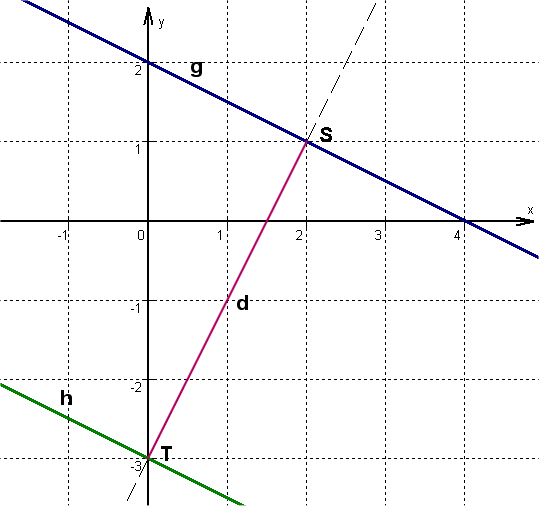Exercises: Distances, parallel and perpendicular lines
Calculate the distance of the parallel lines g: and h: .
Distance between two parallel lines
The shortest path between two parallel lines can be read off along a normal (=perpendicular line) of the two parallel lines .
The distance of the straight lines is equal to the distance between the two intersection points of the normal line with the parallel lines .
Sketch
The construction looks as follows:

| ↓ | Plug in the slope | ||
| ↓ | Simplify the right-hand side | ||
Now set up the line equation.
For this, you need a point , which lies on line h. For instance, you may take the -axis intercept of , which is . But any other point is also correct.
Plug and into the general line equation for d to get the parameter .
| ↓ | multiply out | ||
| ↓ | Plug and into the general line equation. | ||
Determine the intersection of d and g
First calculate the -coordinate of the intersection point .
Normal line d:
Paralle line g:
Equate both function equations:
Now calculate the -coordinate of the intersection point .
| ↓ | Plug in x = 2 . | ||
| ↓ | compute | ||
Hence the point has the following coordinates:
Determine the distance between points S and T.
Determine the distance in -direction.
,
Calculate the difference of the -values of and .
Determine the distance in -direction.
,
Calculate the difference of the -values.
Determine the distance in a direct line between the points.
This is done by the Pythagoraen Theorem:
| ↓ | compute both squares | ||
| ↓ | add | ||
| ↓ | take the root | ||
If you enter into a calculator and round the result to two decimal places, you get:
Result
The distance between the two lines is .